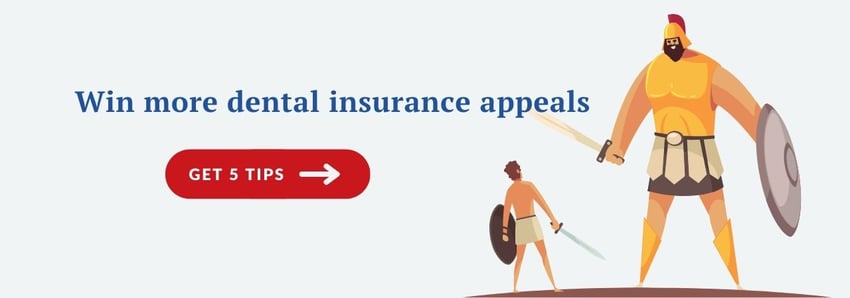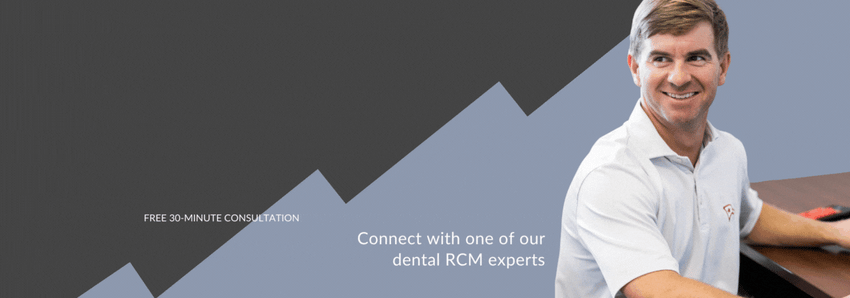If you’ve worked in a dental office for a few years, you certainly have heard the word clearinghouse before. You know it’s a step in the dental billing process, but in the back of your mind you might be thinking, “Do I really understand what an electronic claim clearinghouse is and why it’s necessary?”
You might be surprised to hear that a lot of dental professionals don’t always understand the why or what behind certain terms, even if they’re used every day! And it’s no wonder - there’s so many to keep up with.
At Dental ClaimSupport, we always want to know what clearinghouse dental teams are utilizing before we take over their insurance billing. Which clearinghouse company you use can be important but if we go back to the basics - why are they even necessary?
In this article, we will take you through the basics of an electronic claim clearinghouse. We’ll explain what it is, its purpose, and the benefits of using a good electronic claims clearinghouse. Understanding each facet of the dental billing process is what leads to success in a dental practice, aka more money from reimbursed insurance claims.
What is a dental electronic claims clearinghouse?
A clearinghouse is a private company that acts as a middleman between your dental claim and the insurance company.
To put it plainly, the clearinghouse is your best friend!
Automated tools can be scary to some who are less experienced with it, but automation can also add a lot of efficiency to your dental claims workflow.
A clearinghouse takes your claim, makes sure everything looks correct on it, and electronically sends it to the right dental insurance carrier. Each insurance company has a Payer ID number associated with it. A Payer ID is a five-digit alpha/numeric number that is unique to every insurance company and signals where a claim needs to go.
They’re like a final accuracy check before you submit your claim.
When do you send the insurance claim to the clearinghouse in the dental billing process?
As you probably know, each step of the dental billing process depends on the previous step. So it’s important that each step is completed accurately.
If you look at the dental billing process as a list, you can see where the clearinghouse fits in after the claim is created, and before it is submitted to insurance.
See the dental billing process here:
- Collecting patient information
- Verifying patient insurance coverage
- Recording dental treatment and code data
- Sending the claim to the clearinghouse
- Submitting and tracking claims & any attachments
- Resolving problems on outstanding claims
- Billing patients
- Posting payments
- Running key reports such as collections and account aging reports
Remembering to send the claim to the clearinghouse before the insurance company is a crucial step for accurate, clean claims. Let’s get into that.
Why is a dental clearinghouse important for claim reimbursement?
Dental insurance companies are increasingly making it more challenging for dental teams to have claims reimbursed the first time they are submitted. Dental teams are seeing more and more denials for reasons that require extensive research that they don’t have time for.
So it’s always beneficial to have some help. There are so many opportunities for errors on claims - and clearinghouses can help catch these errors during the validation process.
What kind of errors will clearinghouses catch that your dental team won’t?
As we said - insurance companies are always finding ways to not pay dental practices. It’s impossible to always catch errors on claims if you have other responsibilities in the dental office. This is another reason why you should take advantage of resources like clearinghouses or even outsourcing your insurance billing.
So, here are some errors your clearinghouse will automatically catch:
- Validation errors: Missing insured’s ID#, Missing date of birth, missing teeth/tooth numbers, missing required supportive documentation such as a perio chart, x-ray, or narrative, and any other information that the carrier requires to process the claim.
- Inactive coverage: If the patient’s benefits are no longer active, the clearinghouse will automatically flag this.
Catching these errors before you submit a claim to insurance can save you time and money. If these errors are not caught before your claim is submitted, it will be denied and your payment will then be delayed. No one wants that!
Over half of your overall revenue depends on the money received from insurance claims - accuracy is crucial.

Ready to choose the best electronic claims clearinghouse for your dental practice?
Understanding what a clearinghouse does for your dental practice and the importance of this resource is just the first step. You need to be sure you have the best clearinghouse for your practice so that it is fully immersed in your insurance claims workflow.
Dental ClaimSupport is an outsourced dental billing company that typically will give clearinghouse recommendations to dental teams if they aren’t happy with their current ones.
First thing’s first:
- They need to be HIPAA compliant
- They need to integrate with your practice management software
- They need to allow you to easily attach supportive documentation
- They need a good technical support team and training available for your team
To learn more about the best dental clearinghouses for submitting electronic claims, visit our Learning Center.
Related Posts
Dental revenue resources from Dental Cashflow Solutions (formerly Dental Claim Support)




